Feet, what do I need you for when I have wings to fly?—Frida Kahlo
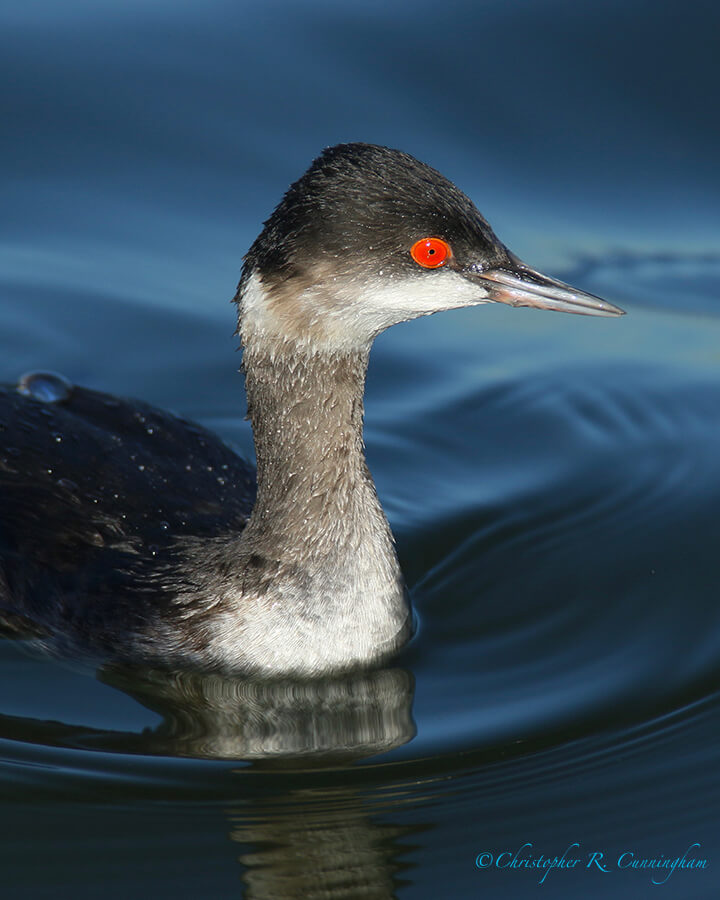
Among extant birds, grebes have a unique method of foot propulsion. There are other foot-propelled divers, loons, for example, but these birds have significant webbing between the toes. The birds with webbed toes push themselves forward against the drag force of water. Grebes, on the other hand, have separate toes with stiff, collapsible asymmetrical lobes on each side. The lobes on the inside are larger than those on the outside. Grebes are also unusual in that their relatively short femora (thigh bones) are oriented perpendicular to the long axis of the body, and the toes beat along a complex dorso-lateral to ventro-medial path, rather than parallel to the direction of the body’s forward motion.
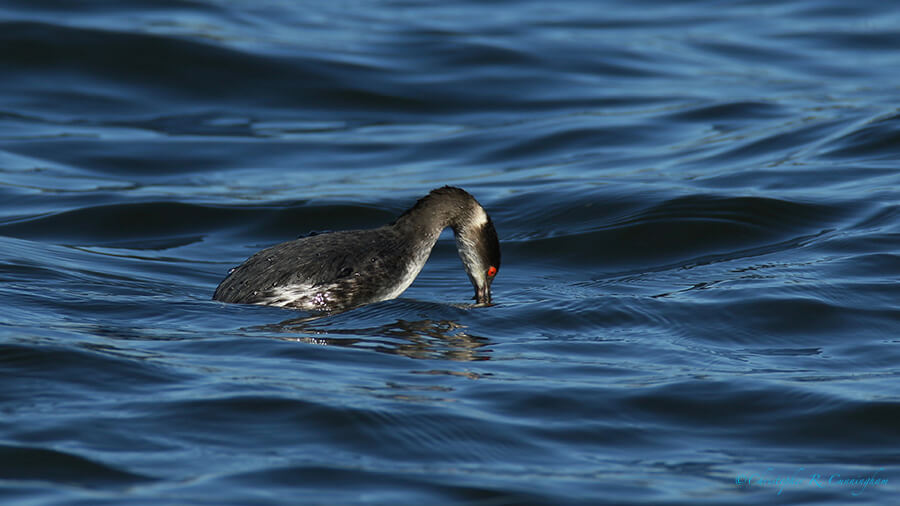
The traditional interpretation of how grebes paddled through the water, and the one I was taught, is that the lobes of the toes would unfold during then power stroke to provide maximum drag to push against, and fold up to reduce drag on the the recovery stroke. A more recent interpretation is that the grebe foot acts like a (slotted) hydrofoil and provides a lift force that propels the bird forward from behind (Johansson and Norberg, 2001)–physically similar to the way in which a wing allows a bird or airplane to fly. The lift hypothesis has an immediate visceral appeal to me given the asymmetrical lobes of the toes—like the vanes of a flight feather. Lift is usually explained by elementary physics textbooks as the result of the Bernoulli principle, essentially the conservation of energy for a moving fluid. This explanation is not correct quantitatively. The true explanation likely involves the most terrifying of all physics concepts . . . turbulence . . . .
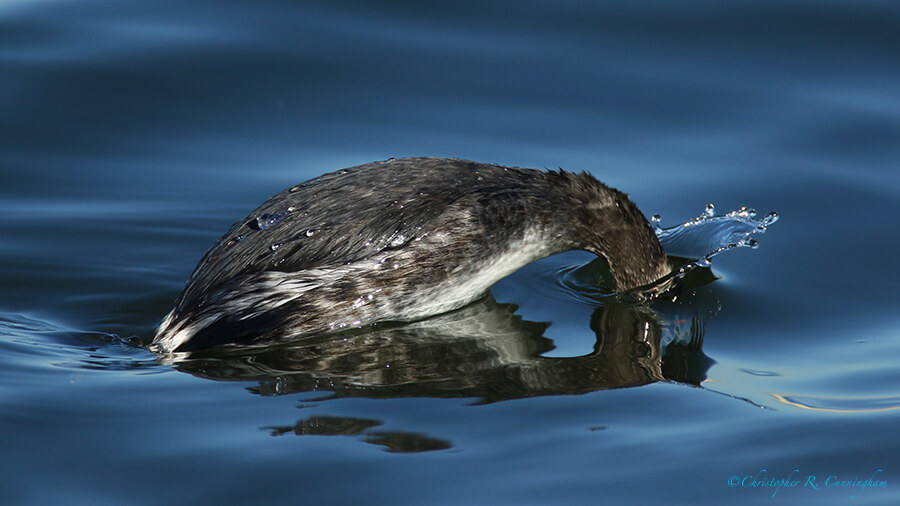
As a photographer on the surface, I haven’t been able to document the strange way in which grebes move through the water. Once and a while, when conditions were right, I have been treated to a glimpse of the legs in motion as in the image below. Swimming with grebes is one more activity to add to an already lengthy bucket list.
I mentioned at the opening that grebes were unique among extant birds. Hesperornithiformes, a group of toothed Cretaceous foot-propelled diving birds, are thought to have had a method of propulsion similar to grebes and to have possessed asymmetrically lobed individual toes. On a recent visit to the New Mexico Museum of Natural History in Albuquerque, I had the opportunity to study the feet of a life-sized model of Hesperornis regalis, the largest of these Cretaceous divers from the Kansas Chalk Sea. Reading the label . . . sure enough, reconstruction supervised by Dr. L. D. Martin, my late (paleo)ornithology professor, a gifted teacher with so many fascinating stories to tell about the lives of birds. . . .
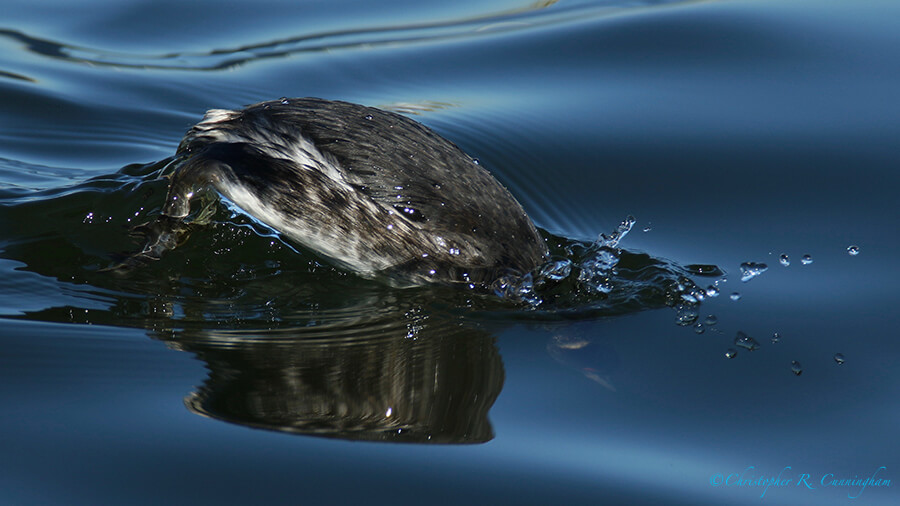
While grebe-watching, I am always interested in seeing these birds return to the surface with prey. In my experience along the Gulf Coast, Eared Grebes rarely return to the surface with prey. After dozens of dives, I have seen only one small fish clamped in a beak. This means that grebes are either remarkably unsuccessful hunters (unlikely), or that they can swallow small prey underwater (likely). Pied-billed and Least Grebes can be seen with large prey on the surface like fish, crawfish, frogs, and dragonflies. Perhaps small prey may be easily swallowed in the submarine realm, whereas large prey items may need to be manipulated into an ideal orientation in the air. In any case, grebes are certainly among the most interesting subjects for study and observation. Elisa doesn’t have to ask me twice to go grebe-watching!
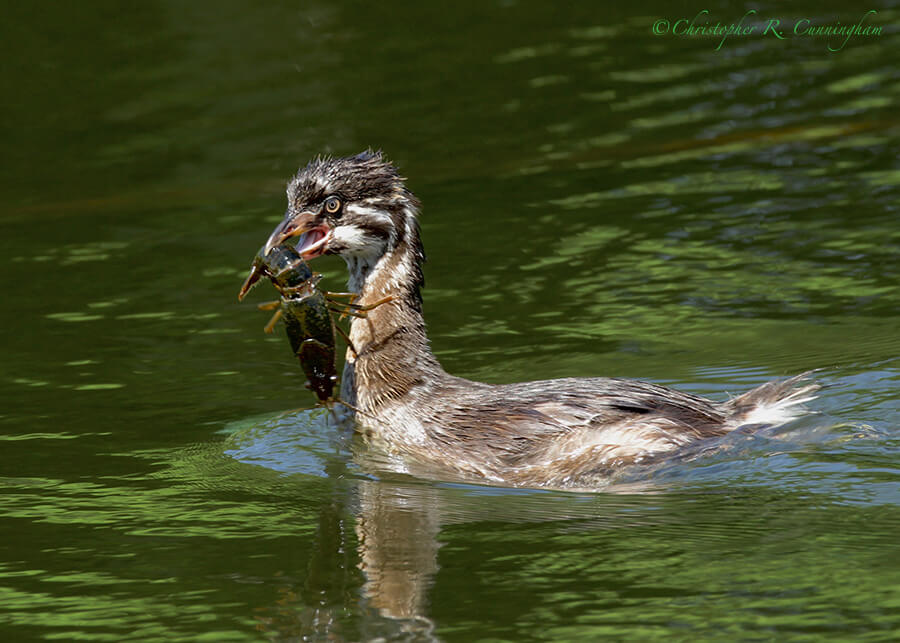
Reference
Johansson, L.C., and Norberg, U. M. L. Norberg. 2001. Lift-based Paddling in Diving Grebe. The Journal of Experimental Biology 204: 1687-1696.
©2017 Christopher R. Cunningham. All rights reserved. No text or images may be duplicated or distributed without permission.